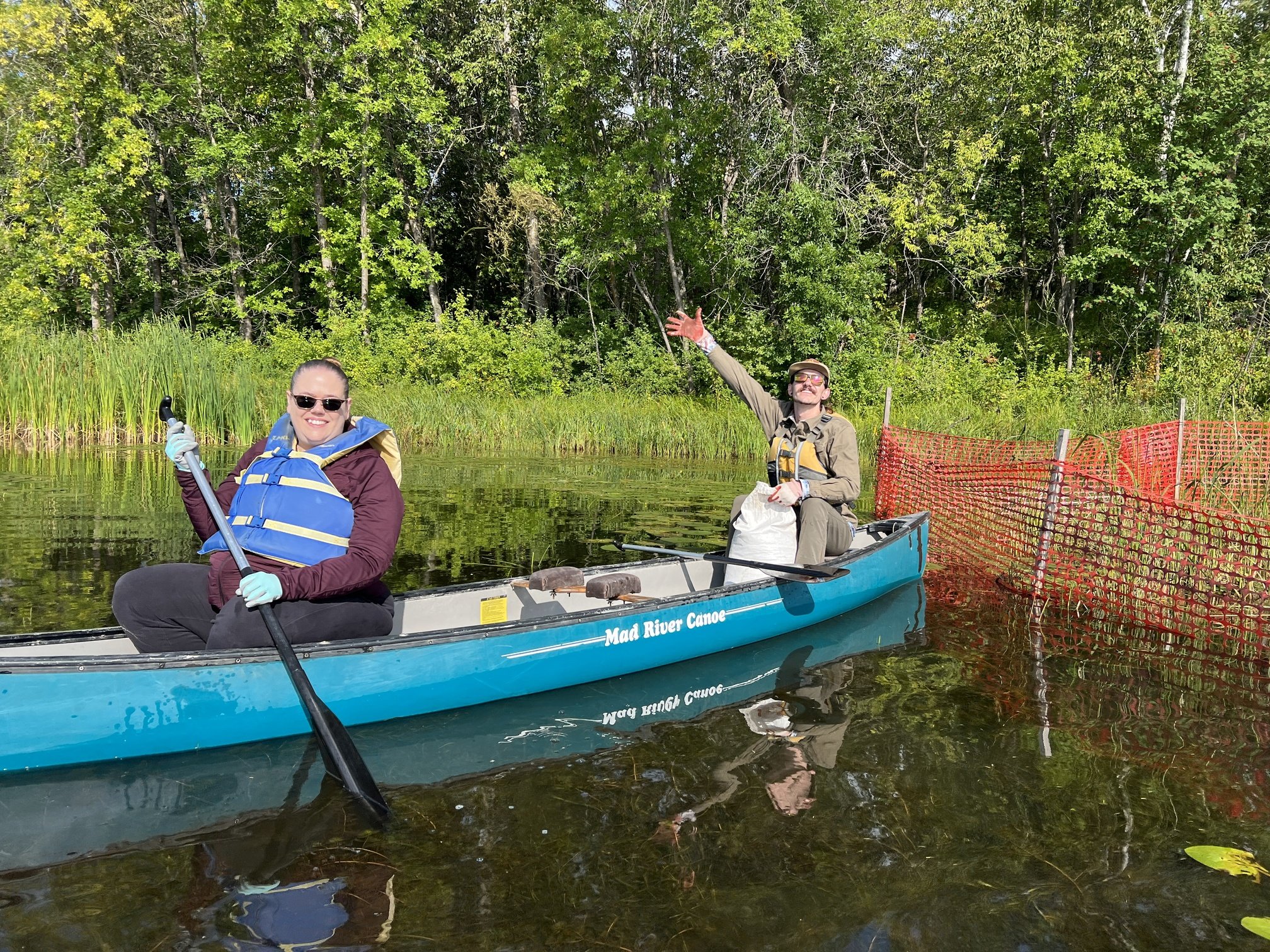SLRA and the Wisconsin DNR plants 500 Pounds of Manoomin/Wild Rice in Kingsbury Bay
The St. Louis River Alliance (SLRA), in partnership with the Wisconsin Department of Natural Resources, planted approximately 500 pounds of manoomin (Ojibwe name for wild rice) on the St. Louis River estuary on Friday, September 8th. This was the 8th year SLRA has had the opportunity to participate in these restoration efforts.
During this time, volunteers learned about manoomin ecology, its cultural significance, and the restoration efforts happening in the St. Louis River, as well as participating in the hands-on reseeding of the wetlands in Kingsbury Bay for re-establishment. In the past, seed has been replanted around Clough Island.
Monitoring by the 1854 Treaty Authority shows that manoomin growth progress in the estuary is steadily increasing in density. With consistent planting and management, partners are hopeful that self-sustaining manoomin will be reestablished. The restoration supports the removal of the St. Louis River Area of Concern (AOC) Fish and Wildlife Habitat impairment and establishes opportunities for harvest of manoomin with a goal of 275 acres of rice by 2025.
Manoomin (Ojibwe), northern wild rice, or Zaizania palustria (scientific name), is an important component to the St. Louis River estuary because of its value as both a cultural and ecological resource. It is tied to the migration story of the Ojibwe people, and it provides an important food source for people and wildlife, while serving as an important habitat for many species.
Historical accounts suggest that manoomin was once abundant in the St. Louis River estuary. From the 1930’s to the 1960’s, the St. Louis River estuary contained between 600 and 1,000 acres of wild rice. Over the past 50 years, its abundance and distribution has been reduced to a few remnant stands. The cause for the decline in manoomin abundance are attributed to many factors including dredging and filling in the estuary, wholesale logging, industry development and water impacts from land use and point source inputs. Despite water quality improvements in the St. Louis River estuary, manoomin populations have not rebounded.
The manoomin Restoration Partnership - St. Louis River Estuary includes the Minnesota Department of Natural Resources, Wisconsin Department of Natural Resources, Fond du Lac Band of Lake Superior Chippewa, St. Louis River Alliance, and additional tribal partners and non-profits. The Partnership is seeking to restore at least 275 acres of wild rice by 2025. Visit Wisconsin DNR’s website for more information on the St. Louis River Area of Concern or https://youtu.be/qjgW7SVNrxg to see a short video highlighting the recent work to restore manoomin.
Successful wild rice restoration may require over 5 years of seeding due to annual fluctuations in rice growth, precipitation and water levels, and impacts from predation such as browsing by Canada geese. SLRA volunteers have seeded manoomin in approximately 10 acres near Clough Island between 2015-2020. In 2020-2023 The Alliance has seeded in Kingsbury Bay in order to establish additional strands.
Contact: Kris Eilers, St. Louis River Alliance Executive Director, Kris@StLouisRiver.org




























